
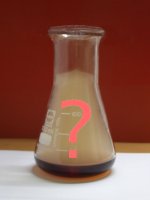

Riddle: Thiocyanate and nitrite
In this experiment the formation of a dark red/brown compound from thiocyanate and nitrite is shown. The compound is really intensely colored. Also, a white fume is formed, which probably is due to release of the dark red/brown compound into the air, followed by decomposition. Another reason for the formation of the white fume may be decomposition of the dark red/brown compound in the water and that a decomposition product is released into the air. The fumes are remarkably dense. Just a few cm of the fumes are totally opaque. As long as the liquid is red, release of the thick fumes continues.
The red/brown compound may be nitrosyl thiocyanate (ON-SCN), but more investigation may be necessary. In literature the compound nitrosyl thiocyanate is described as a red/brown compound, but no mention is made of the thick white fume.
![]()
![]() Required
chemicals:
Required
chemicals:
-
dilute hydrochloric acid, approximately 5% by weight
- sodium thiocyanate
- sodium nitrite
![]() Required
equipment:
Required
equipment:
-
test tube
- erlenmeyer
- piece of glass, needed for covering the erlenmeyer
- long PVC tube, length approximately 40 cm, diameter approximately 1 cm, preferably bent at one end
![]() Safety:
Safety:
-
In this experiment a small amount of NO or NO2 is prepared. These gases are insidiously toxic. Breathing these gases only results in minor direct irritation or suffocation. The real effect is delayed by several hours. Because of the low warning level, absolute care must be taken not to inhale any of these gases. The amounts produced in this experiment are quite small, but in order to be on the safe side it is recommended to perform this experiment only in a good fume hood or outside!
- A very thick white fume is formed. What this is, is unknown to the author. Just to be on the safe side, do not breathe the white thick fume, so this is another reason to do this experiment outside and keep the liquid outside, also after the initial formation of some NO or NO2.
- Hydrochloric acid (5%) is corrosive.
- Sodium nitrite is toxic and may irritate the skin. In contact with acids, the gases NO and/or NO2 are released.
- In this experiment an instruction is given to blow away the air inside an erlenmeyer or bottle by using a PVC tube. This step is potentially dangerous if one is not absolutely sure to not breathe inwards during this operation. Otherwise this should NOT be attempted. A safer way is to use a small compressed 'air' cylinder (something like 3M Dust Remover), as can be purchased at photographer shops for blowing away dust from cameras and other equipment.
![]() Disposal:
Disposal:
-
The chemicals, used in this experiment, can be flushed down the drain with a large amount of water.
![]()
A test tube experiment, showing a dark red compound
Add a small spatula full of sodium thiocyanate to a few ml of dilute hydrochloric acid. Dissolve all the solid. A colorless solution is obtained. To this solution add a spatula full of sodium nitrite. This results in fizzling of the solution and the solution turns dark red/brown immediately. The gas produced is mainly nitrogen monoxide (NO), which on contact with air is converted to brown nitrogen dioxide (NO2). After the initial vigorous fizzling, the liquid slowly turns lighter. During this, a white fume is released by the liquid and a colorless gas is evolved slowly.
The figure below at the left shows the contents of the test tube, immediately after adding the sodium nitrite. The middle figure shows the same test tube, a few minutes later. Here, one can clearly see the formation of NO2 from the NO, which is released by the liquid. A close-up of the same test tube is shown in the right picture, with a darker background, showing the evolution of gas. Some remnants of white fume can also be seen here.
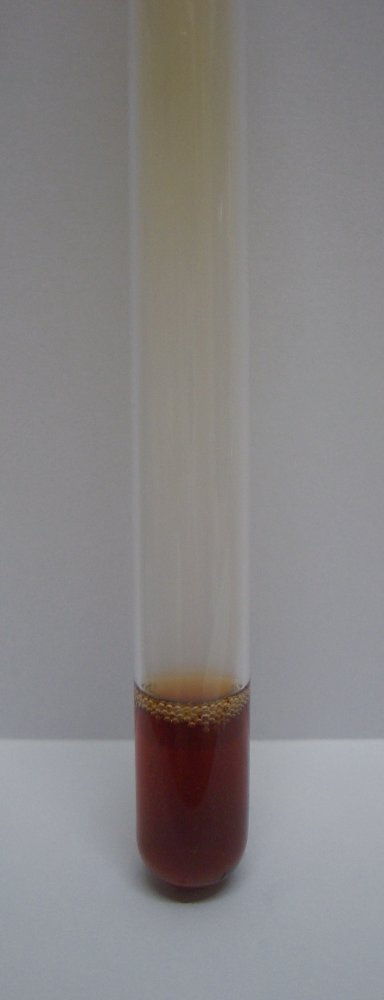

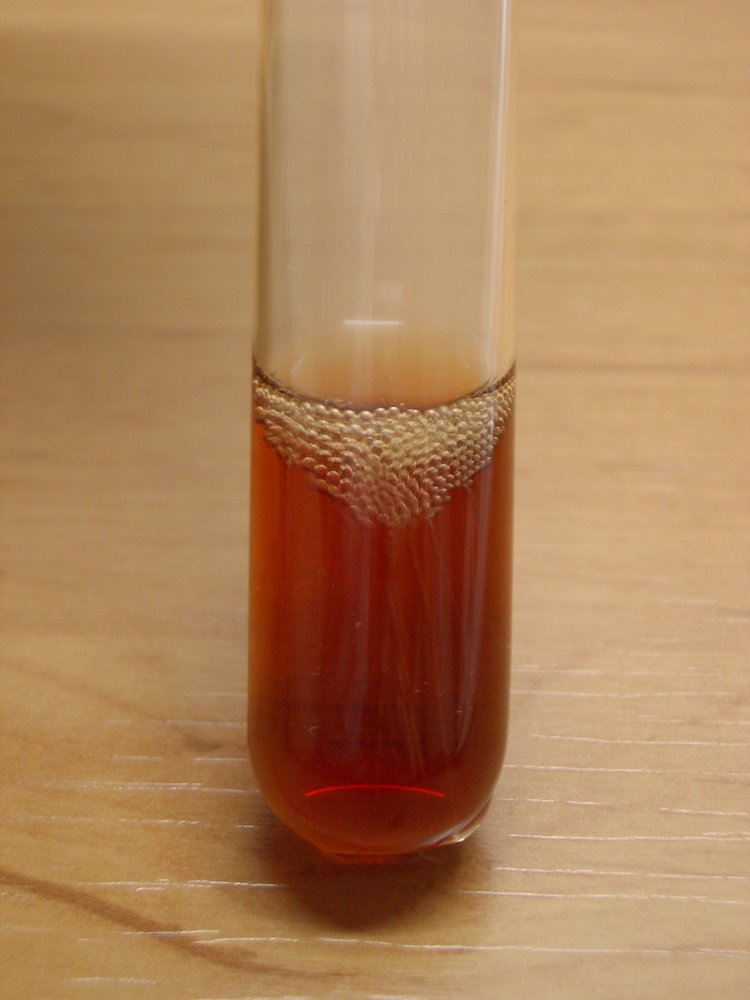
The fumes are thickest in the test tube, shown at the left. This is not shown very well by the picture, because of the choice of background. In the following sequence much better pictures are shown of the thick fumes.
![]()
Release of thick white fumes
In this experiment, similar results are obtained as in the experiments above, but now the fumes are made visible more clearly.
Put a small volume (approximately 10 ml) of dilute hydrochloric acid in a small erlenmeyer or a small transparent bottle of 100 ml. Add a spatula full of sodium thiocyanate to the acid and dissolve the solid. This results in a clear colorless liquid. After this, add a spatula full of sodium nitrite. This results in fizzling and immediate formation of a dark red/brown compound. The following two pictures show the contents of the erlenmeyer, just before and just after adding the pinch of sodium nitrite. In the right picture, one can see that the air above the liquid is a little brownish. This is due to formation of some NO2.
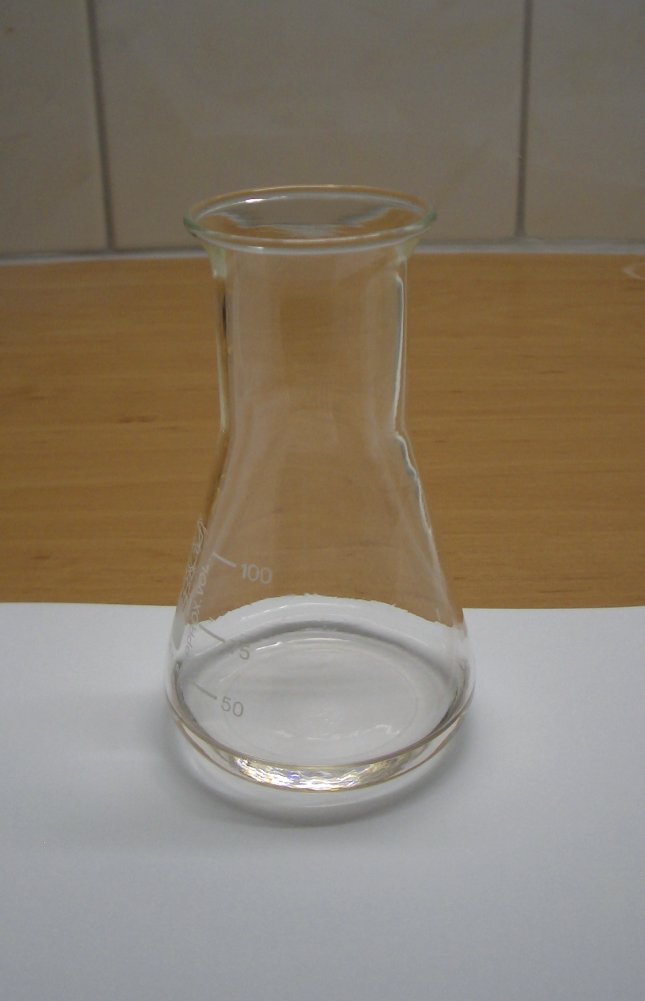
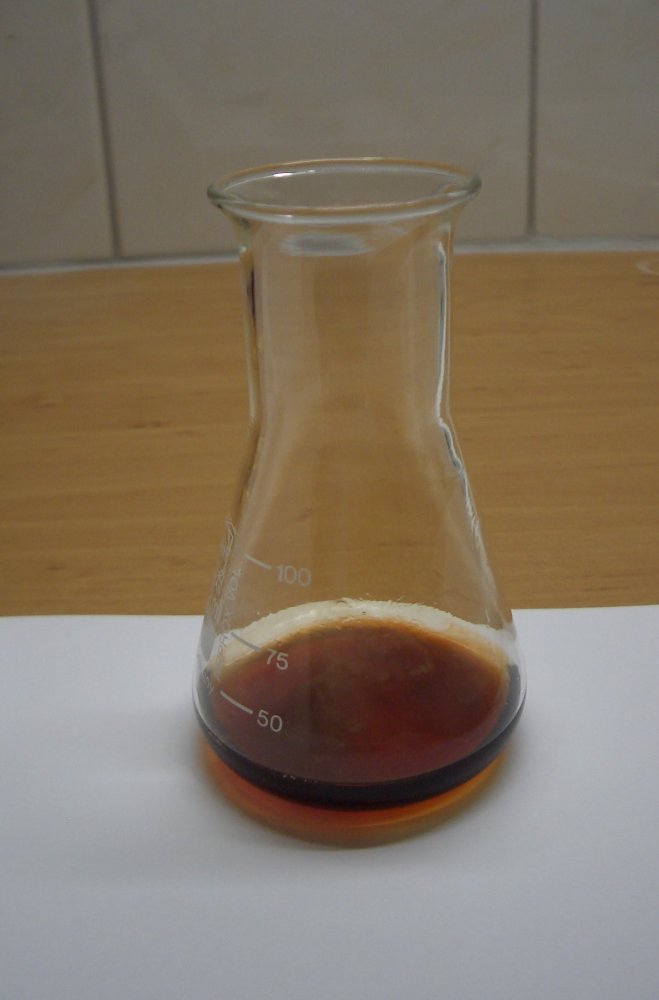
Almost immediately after the initial strong fizzling, a thick white fume is formed. This fume apparently does not react with the brown nitrogen dioxide, with which it mixes. The following picture, taken from above, shows the formation of the white fume, just a few seconds after taking the right picture of the erlenmeyer, as shown above. In this picture, the fume looks somewhat yellow/brown. This is not the real color of the fume, but this is due to mixing of the fume with a small amount of nitrogen dioxide. Later pictures will show the fume without NO2.
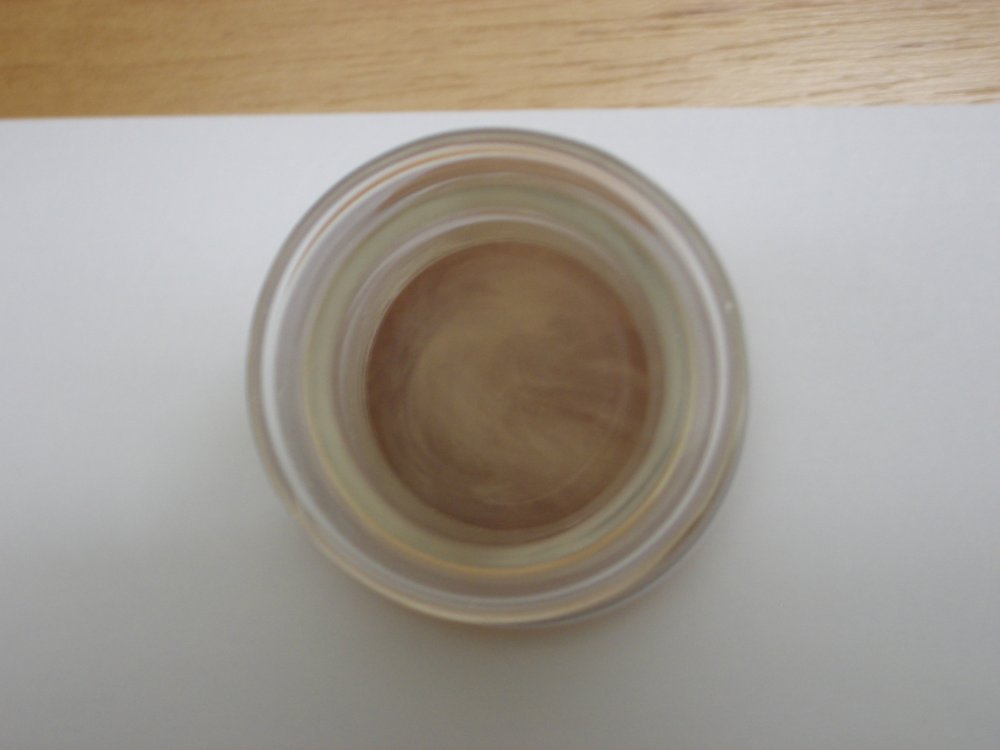
The next two pictures show the erlenmeyer, side view. The erlenmeyer is covered with a piece of glass. The second picture was taken by placing a dark red piece of paper behind the erlenmeyer. This picture nicely shows the fume, which slowly moves upwards. There is a sharp border between the air with fume and air without fume. All air in the erlenmeyer is slightly brown, due to presence of NO2.
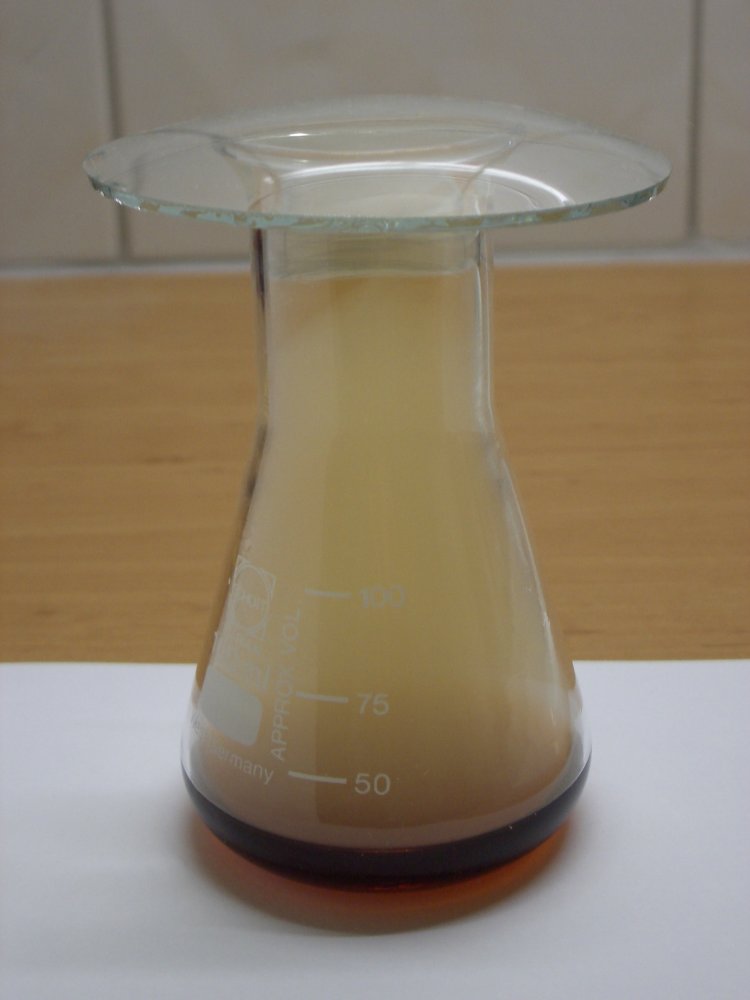
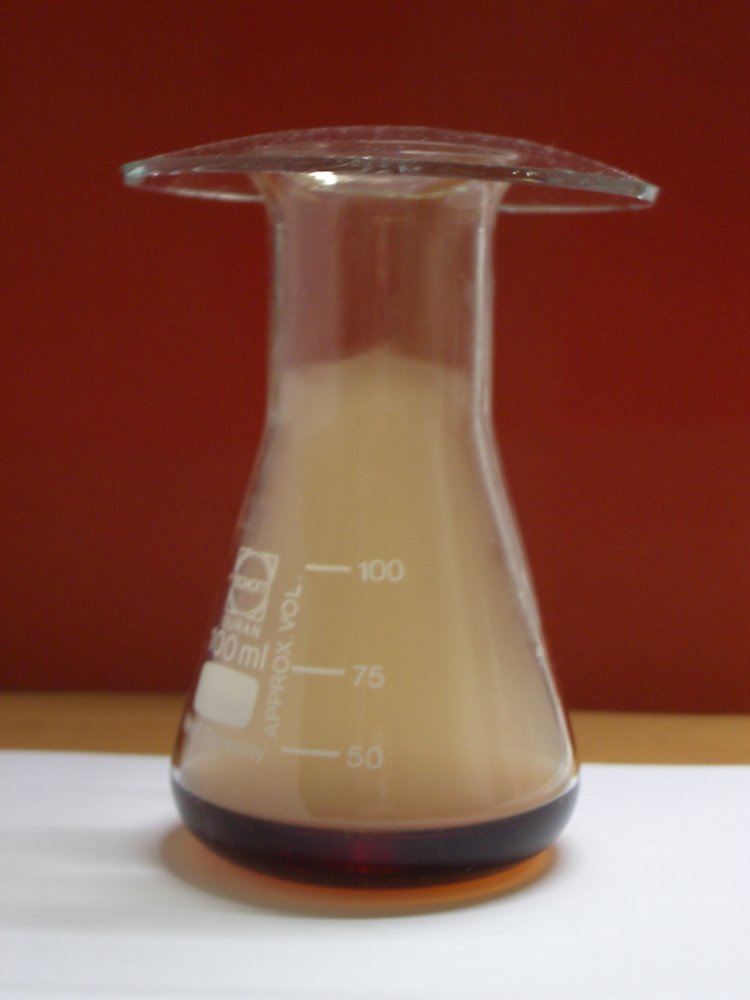
After this, all fume is blown away from the erlenmeyer. This is done by putting one end of a PVC tube just above the erlenmeyer and cautiously blowing air into the other end of the tube. This must be done carefully, such that no liquid is blown out of the erlenmeyer. The blowing can be done by mouth, but then one must be careful not to get the fumes into the face and one must be only breathing outwards as long as the mouth is near the end of the PVC tube! The following two pictures show the contents of the erlenmeyer, just after blowing fresh air in it and approximately one minute later. These pictures show that release of the fumes continues for a long time. These pictures also show that the liquid already has become much lighter compared to the first few seconds, just after adding the sodium nitrite.
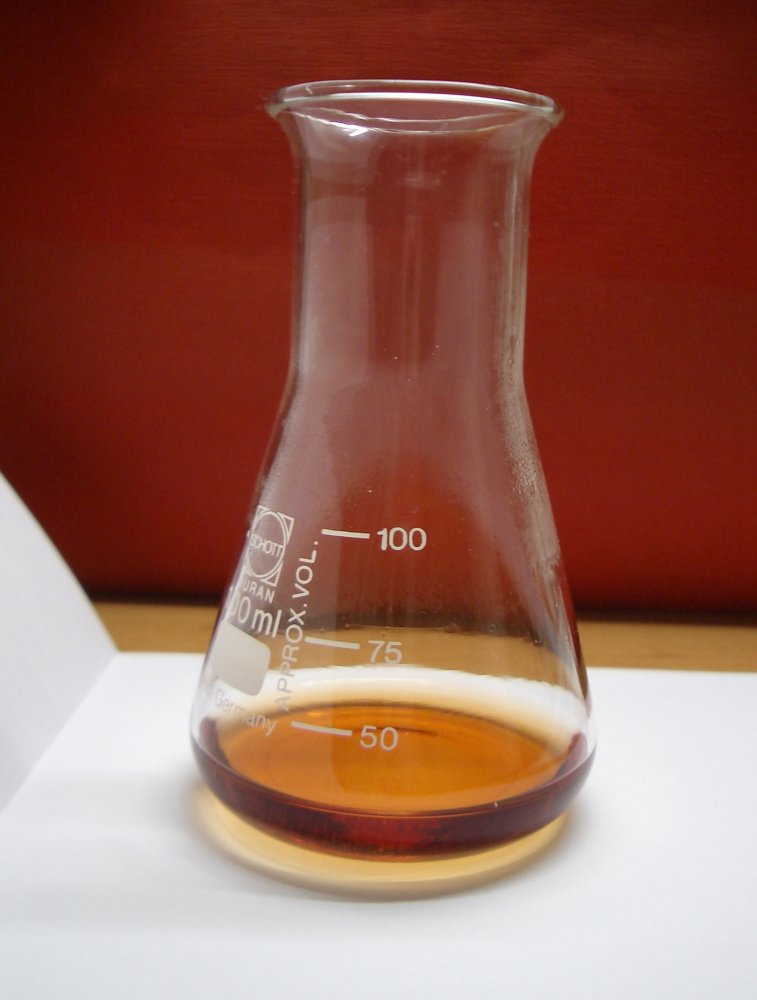
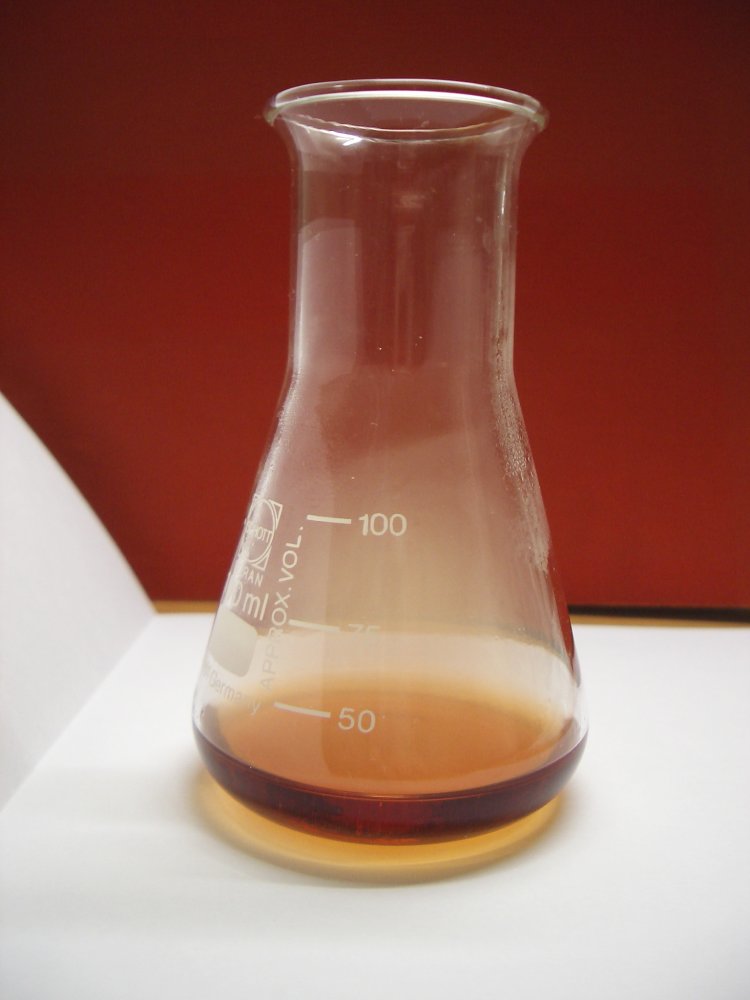
As a final step, some of the liquid from the erlenmeyer is put in a test tube. The liquid is poured into the test tube carefully, such that it flows downwards along the inside of the test tube. While this is done, the area of contact between the liquid and the air is relatively large and a lot of pure white fume is produced. The red/brown liquid is bubbling all the time. These bubbles are colorless and probably are nitrogen monoxide (NO).
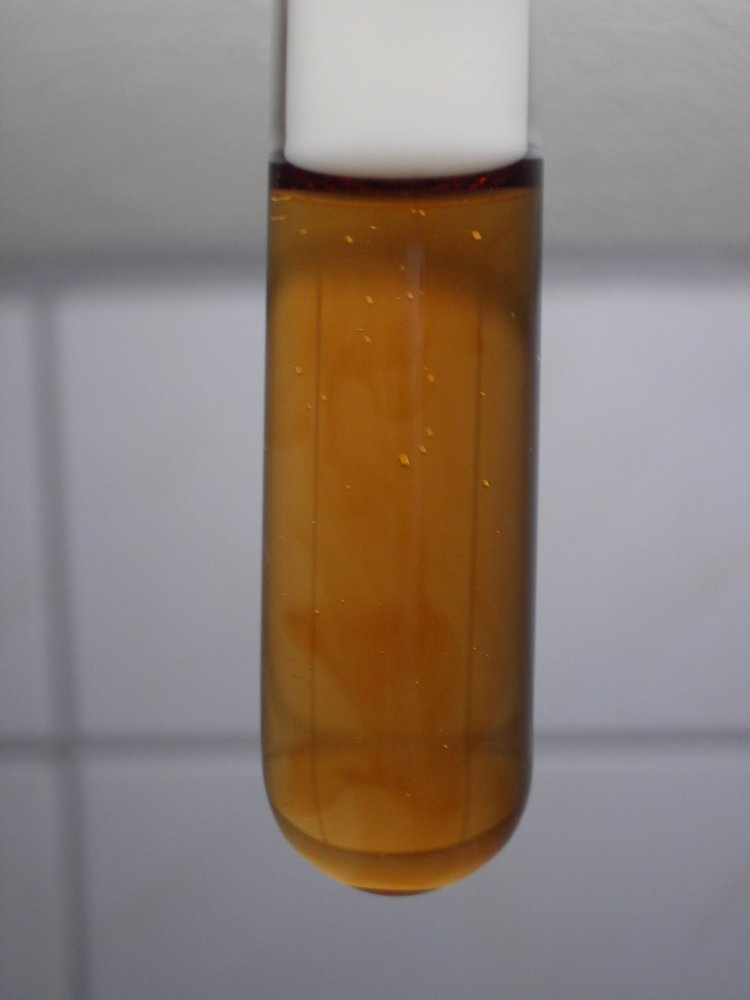
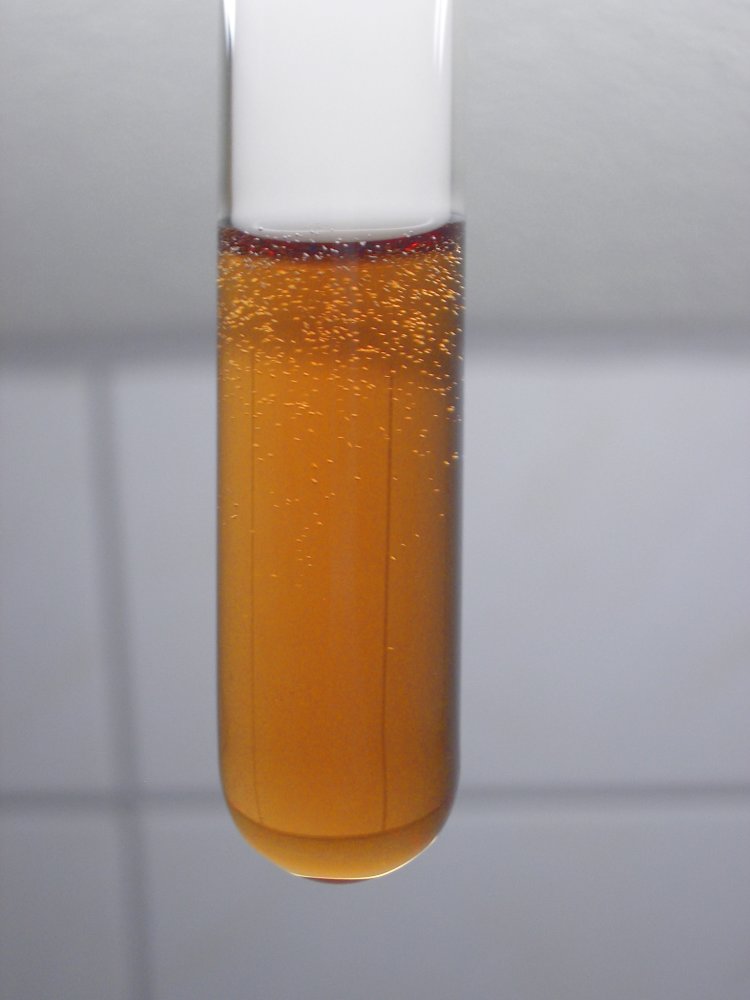 As
soon as these bubbles reach the surface of the liquid, some nitrogen dioxide is
formed, which reacts with something in the liquid, resulting in formation of new
amounts of the dark red/brown compound. This
newly formed red/brown matter has a higher
density than the surrounding liquid and slowly goes to the bottom.
While doing so, it curls around and produces darker
lines and curves in the liquid. The picture at the left shows all phenomena,
described here. The right picture shows
intensification of the bubbling after shaking of the liquid. Each time, when it
is shaken, the bubbling becomes noticeably faster. The white fume above the
liquid remains dense, also after shaking. The liquid itself, however, turns
lighter and lighter.
As
soon as these bubbles reach the surface of the liquid, some nitrogen dioxide is
formed, which reacts with something in the liquid, resulting in formation of new
amounts of the dark red/brown compound. This
newly formed red/brown matter has a higher
density than the surrounding liquid and slowly goes to the bottom.
While doing so, it curls around and produces darker
lines and curves in the liquid. The picture at the left shows all phenomena,
described here. The right picture shows
intensification of the bubbling after shaking of the liquid. Each time, when it
is shaken, the bubbling becomes noticeably faster. The white fume above the
liquid remains dense, also after shaking. The liquid itself, however, turns
lighter and lighter.
![]()
Hydrolysis of red/brown compound
In order to evaluate the stability of the
red/brown compound on dilution with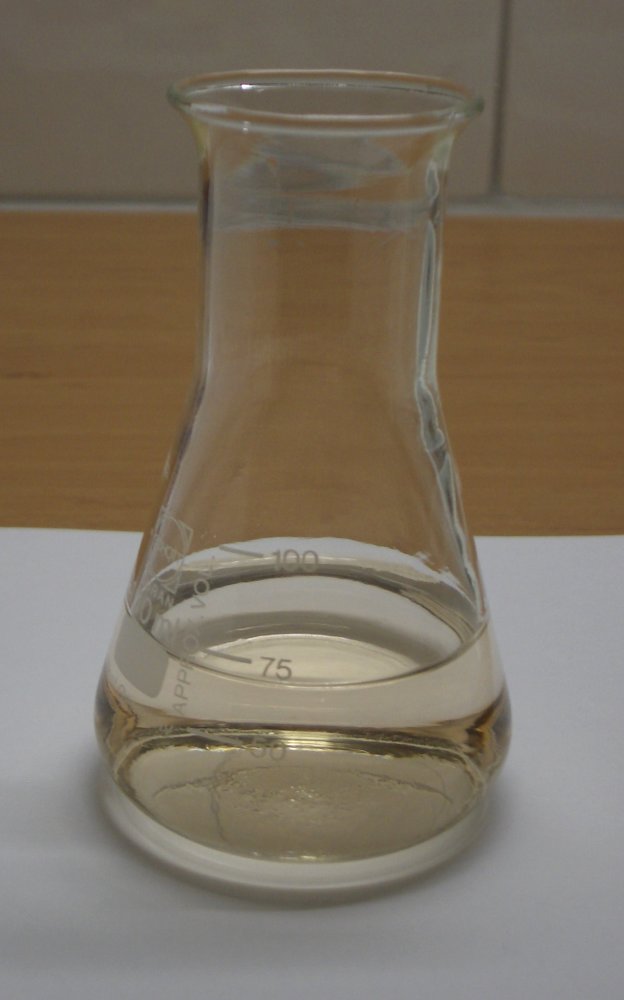 water, the contents of the test tube is returned into the erlenmeyer and some
water is added to the liquid. The liquid is diluted approximately 5 times. On
dilution, the color of the liquid becomes much weaker than one would expect on
the basis of dilution only. Probably the red/brown compound is hydrolyzed and
the results of hydrolysis are colorless.
water, the contents of the test tube is returned into the erlenmeyer and some
water is added to the liquid. The liquid is diluted approximately 5 times. On
dilution, the color of the liquid becomes much weaker than one would expect on
the basis of dilution only. Probably the red/brown compound is hydrolyzed and
the results of hydrolysis are colorless.
![]()
Discussion of the results
Literature mentions the existence of a brown compound nitrosyl thiocyanate (ON-SCN). The red/brown compound, observed during these experiments, may be this compound. No mention, however, is made of the white thick fumes. If the red/brown compound, observed here, indeed is nitrosyl thiocyanate, then it is quite remarkable, that no one ever mentioned the thick white fumes. An open question (at least for the author) is what the white fume is made of.
Remarks:
- sodium thiocyanate may be replaced by potassium thiocyanate or ammonium thiocyanate
- hydrochloric acid may be replaced by dilute sulphuric acid or nitric acid